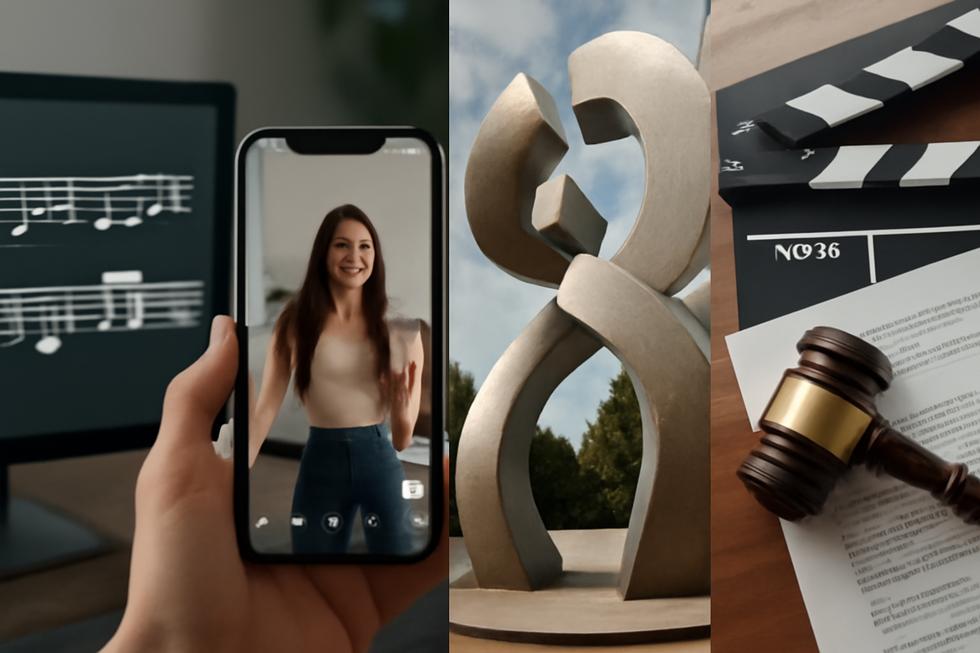Introduction
Copyright laws shape the foundation of protecting creative and intellectual property in today’s business environment, where digital and physical content frequently intersect. Understanding real-life examples of copyright enforcement offers critical insights for business owners aiming to avoid costly legal disputes and safeguard their innovations and brand reputation. From the landmark Napster case highlighting risks of unlicensed digital music sharing, to TikTok’s efforts in managing licensed user-generated music, and from visual arts copyright clashes in public spheres to complex film industry legal battles with streaming services, each scenario reveals vital lessons. This article explores these diverse copyright cases to equip business owners with practical knowledge on licensing, rights enforcement, and navigating the evolving copyright landscape effectively.
Tables of Contents
Chapter 1: Copyright Examples in Real Life: Music File Sharing and the Napster Case
- The Technological Evolution of Music Sharing: Lessons from the Napster Revolution
- The Landmark Legal Battle That Redefined Copyright Enforcement in Digital Music Sharing
- Transforming the Music Industry: The Economic and Social Legacy of Napster’s Copyright Disruption
Chapter 2: Navigating Copyright Complexities: TikTok’s Licensing Challenges with User-Generated Music Content
- The Intricacies of Music Licensing and Copyright Enforcement on TikTok’s User-Generated Content Platform
- Balancing Content Detection and Creator Compliance Amid TikTok’s Licensing Hurdles
- Complex Copyright Struggles in TikTok’s Software and User-Generated Content Licensing
Chapter 3: Real-World Copyright Challenges in Visual Arts: Navigating Unauthorized Use of Sculptures and Graffiti
- How Legal Protections Shape the Use and Misuse of Sculptures and Street Art in Copyright Disputes
- Navigating Copyright Conflicts and Commercial Exploitation in Graffiti and Sculpture Art
- Navigating Copyright Challenges in Visual Arts: When Sculptures and Graffiti Meet Unauthorized Use
Chapter 4: Copyright Examples in Real Life: Film Industry Copyright Disputes and Streaming Service Lawsuits
- Navigating Character and Trademark Rights Conflicts in Film and Streaming Copyright Disputes
- The Rising Tide of Streaming Lawsuits and AI Challenges in Film Copyright Enforcement
- Navigating Innovation and Intellectual Property: Film Industry Challenges with Streaming, AI, and Trademark Protections
Chapter 1: Copyright Examples in Real Life: Music File Sharing and the Napster Case
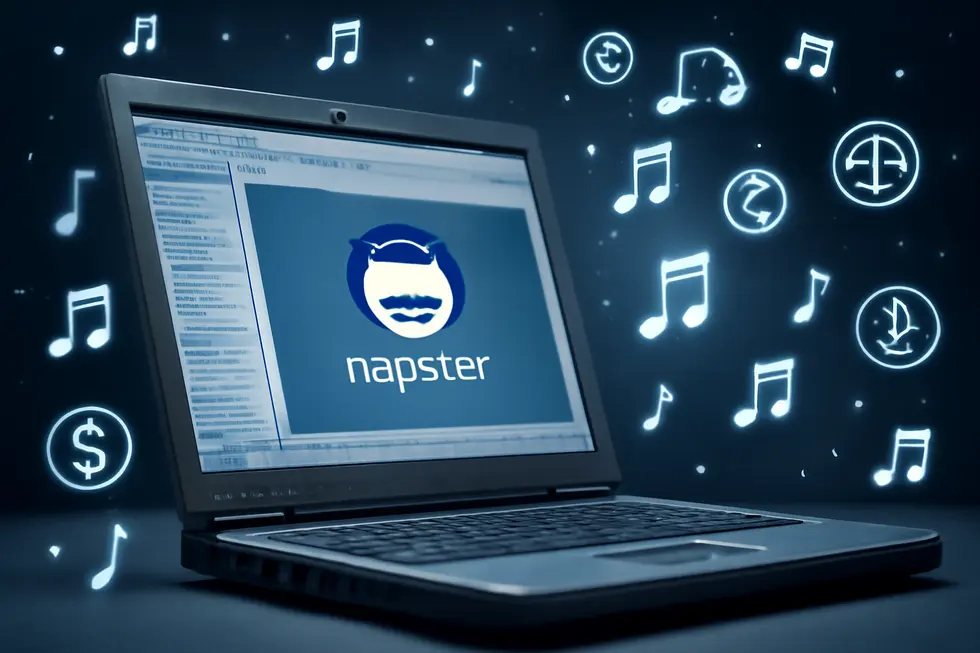
1. The Technological Evolution of Music Sharing: Lessons from the Napster Revolution
The Napster case represents a pivotal moment in the technological evolution of music file sharing and its intricate relationship with copyright law. Napster introduced a novel peer-to-peer (P2P) network structure that transformed how users accessed and exchanged music by enabling direct file transfers from one user’s device to another without relying on centralized servers. This decentralized approach fundamentally challenged traditional copyright enforcement, as it circumvented established distribution channels and licensing frameworks.
Napster’s architecture allowed millions of users to share MP3 files globally, creating a vast, unauthorized music marketplace. While this innovation appealed to consumers seeking easy and free access to music, it simultaneously ignited a legal firestorm. The service’s technology effectively facilitated widespread copyright infringement by hosting no files itself, yet enabling access to copyrighted content stored on individual user devices. This blurred the lines of liability and tested the limits of existing copyright laws.
The legal response underscored the necessity for digital platforms to embrace technological safeguards that respect intellectual property rights. The court rulings holding Napster liable for contributory infringement set a critical precedent: technology providers cannot ignore how their systems are used. Consequently, platforms must implement robust content control measures such as digital rights management (DRM), content filtering algorithms, and user policing mechanisms to prevent illegal file sharing.
These technological controls function not only as deterrents but as compliance tools, balancing user engagement with legal obligations. The Napster experience revealed the shortcomings of unregulated P2P networks and propelled the music industry and technologists toward licensed digital distribution models. The evolution that followed saw platforms integrating legitimate licensed libraries and embedding automated detection systems to protect content owners.
This case thus illustrates how technology both disrupts and reshapes copyright enforcement. It emphasizes that innovative sharing methods require accompanying innovations in legal frameworks and technological protections. For creators and distributors alike, the lesson is clear: safeguarding creative works in the digital age demands a synergy of technology and law to foster sustainable, lawful access to music.
For a detailed understanding of copyright terminology and how it applies in the business environment, exploring copyright language for business owners can provide valuable context.
External Reference: Napster’s legal challenges and shutdown (2001)
2. The Landmark Legal Battle That Redefined Copyright Enforcement in Digital Music Sharing
The Napster case marked a pivotal turning point in how copyright law is enforced in the era of digital music file sharing. Launched in 1999, Napster pioneered peer-to-peer (P2P) technology, allowing millions of users to share MP3 files directly with each other, sidestepping traditional distribution methods. While innovative, this model enabled widespread unauthorized sharing of copyrighted music, sparking intense legal scrutiny.
The conflict escalated notably in 2000 when a renowned heavy metal band sued Napster after discovering an unreleased demo circulating freely on the platform. This legal challenge underscored how Napster’s technology facilitated mass infringement by users sharing whole catalogs without authorization or compensation. The lawsuit also implicated multiple universities, as students used campus networks to participate in unauthorized sharing.
Courts ultimately held Napster liable for contributory copyright infringement because the platform knowingly enabled copyright violations. This established a critical precedent: platforms can be accountable if they materially contribute to infringement—even if they do not directly host the content. Consequently, Napster faced a court injunction demanding it deploy measures to block unauthorized sharing or cease operations.
Napster’s eventual settlement included agreements to restrict sharing of objectionable content, but persistent pressure from major record labels forced its shutdown in 2001. This outcome highlighted the legal risks digital platforms carry when operating without proper licensing agreements and effective content control mechanisms.
This landmark case reshaped the digital music landscape, illustrating that technological innovation does not exempt platforms from copyright laws. It underscored the legal necessity for licensing partnerships and proactive enforcement strategies to protect intellectual property in user-driven environments. These lessons continue to inform how modern digital content services navigate complex copyright frameworks.
For more insight into how copyright functions in business contexts and its enforcement, refer to this detailed resource on copyright language for business owners.
(Source: https://en.wikipedia.org/wiki/Napstercopyrightinfringement_case)
3. Transforming the Music Industry: The Economic and Social Legacy of Napster’s Copyright Disruption
The emergence of Napster in 1999 marked a pivotal moment that reshaped the music industry’s economic and social landscape. As a peer-to-peer file-sharing platform, Napster enabled users to exchange music files freely without traditional payment, upending the established business model where revenue largely stemmed from album sales priced between $15 and $20. This radical shift created a fertile ground for copyright infringement, since Napster’s service bypassed licensing agreements, allowing millions to access music without compensating artists or record labels.
Economically, Napster triggered sharp declines in sales revenues globally, undermining the income streams of musicians, recording companies, and physical retailers. The service’s centralized servers were critical in the ensuing legal actions, as courts determined Napster materially facilitated unauthorized distribution of copyrighted material. Industry giants sued, leading to Napster’s forced shutdown by 2001, a legal outcome that underscored the necessity of robust copyright enforcement mechanisms in the digital age.
However, beyond immediate losses, Napster sparked a lasting transformation in consumer behavior and music distribution. By popularizing free, instant access to individual songs, it catalyzed a shift in demand from bulky album ownership to digital formats focusing on singles. This consumer expectation paved the way for legal digital marketplaces offering affordable song downloads, which successfully reconciled the demand for access with copyright protection. Later, subscription-based streaming services further adapted to these new consumption patterns, illustrating how Napster’s disruption facilitated innovation within copyright frameworks.
From a societal perspective, Napster challenged traditional notions of music ownership and access, leading to widespread discussion about intellectual property rights in the internet era. Legal responses evolved from targeting individual users to focusing on platform liability and internet service provider roles, complex areas further shaped by subsequent cases reinforcing or limiting digital sharing responsibilities.
In essence, Napster’s legacy lies in its dual role as both a disruptor of conventional economic models and a catalyst for a new digital music ecosystem. This case exemplifies how copyright law must continuously adapt to technological advances and shifting cultural behaviors. For deeper insights into the economic principles underlying copyright, see understanding copyright and economics.
Chapter 2: Navigating Copyright Complexities: TikTok’s Licensing Challenges with User-Generated Music Content
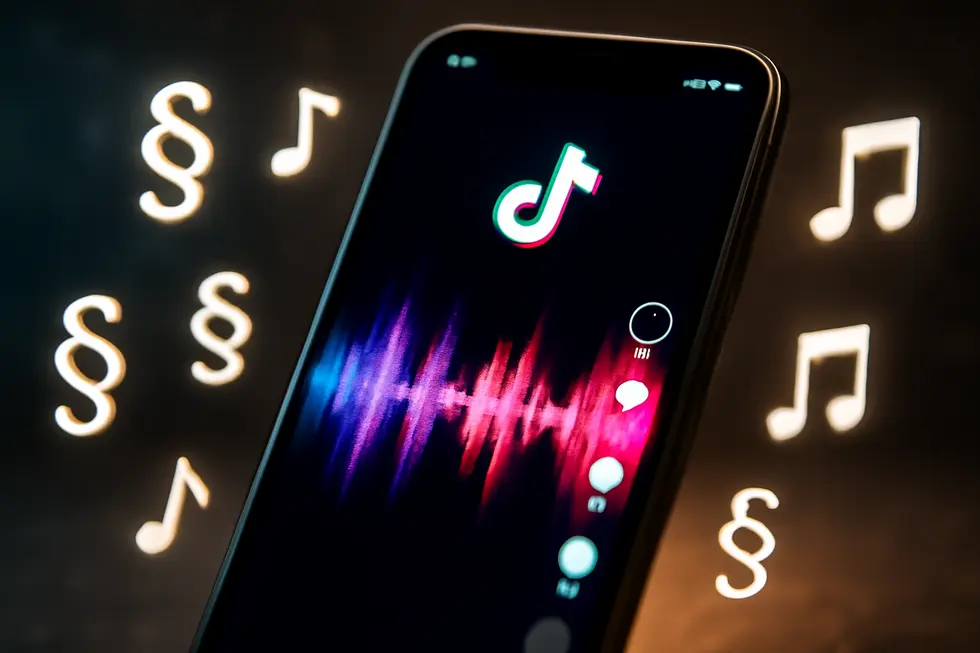
1. The Intricacies of Music Licensing and Copyright Enforcement on TikTok’s User-Generated Content Platform
TikTok’s immense popularity stems from its dynamic user-generated content (UGC), much of which features copyrighted music integral to viral trends and creative expression. This integration, however, creates profound licensing and enforcement challenges. To legally permit users to incorporate popular tracks, TikTok must negotiate sweeping music licenses with major rights holders like Sony Music and others. These agreements grant broad usage rights but often exclude commercial contexts such as branded content or monetized videos. As a result, creators aiming for commercial projects face restrictions and must rely on limited commercial music libraries or seek independent licenses to avoid infringement.
Enforcing copyright on TikTok is complicated by the platform’s staggering content volume and the rapid, viral spread of videos that often remix or repurpose music in innovative ways. Automated detection tools scan uploads to flag copyright violations, yet perfectly policing millions of daily videos remains an ongoing struggle. Repeated infringement can lead to escalating penalties—ranging from content removal to account suspension—yet enforcement lag and false positives pose risks for both users and rights holders.
Many creators unknowingly breach copyright rules by using trending songs outside authorized licenses or re-editing tracks without permission. TikTok promotes compliance by curating licensed music libraries and providing a separate commercial option, but the limited selection and quality issues compel some creators to risk unauthorized use. This environment highlights the delicate balance between protecting intellectual property and nurturing creativity.
Beyond music, TikTok also grapples with trademark risks when user videos incorporate logos or slogans without permission, complicating brand protection efforts amid influencer marketing and rapid content sharing. These aspects underscore the continual need for platforms, creators, and brand owners to remain vigilant in rights management.
Ultimately, TikTok’s experience reveals that modern content platforms must combine robust licensing agreements, sophisticated detection technologies, and proactive user education to navigate copyright in a user-driven digital landscape. This adaptive approach reflects the wider challenges detailed in discussions about copyright enforcement and licensing in online creative communities.
For creators seeking clarity on these issues, TikTok Copyright Explained by Uppbeat offers detailed guidance on how to respect and navigate music rights within the platform.
2. Balancing Content Detection and Creator Compliance Amid TikTok’s Licensing Hurdles
Navigating the labyrinth of copyright enforcement on TikTok involves formidable content detection and user compliance challenges. The platform’s massive volume of rapidly spreading user-generated videos often feature copyrighted music, trademarks, and brand elements incorporated without proper authorization. This dynamic environment, characterized by short-lived viral content, creates serious difficulties in identifying and addressing potential infringements swiftly and effectively. Videos can gain immense traction within hours before fading into obscurity, leaving brand owners and rights holders struggling to monitor and enforce their intellectual property rights in real time.
Compounding these detection obstacles are ambiguities arising from influencer partnerships, where distinctions between authorized use and unintentional infringement blur. TikTok faces the delicate task of policing misuse without stifling creativity, which is essential to its core appeal. To mitigate compliance lapses, TikTok employs educational tools such as creator policy quizzes, alongside violation notifications that pinpoint specific content breaches. These systems foster creator awareness and transparency about rules, aiming to improve adherence. Yet, the platform’s sheer scale means enforcement remains an ongoing, complex effort.
From a licensing standpoint, TikTok’s challenges intensify due to the multifaceted nature of rights involved. The platform must coordinate licenses for background music, monitor the use of trademarks within on-screen video elements or text overlays, and ensure creators disclose product promotions properly according to advertising regulations. Emerging technological solutions, including automated disclosure triggers linked to distribution metrics via smart contracts, are being explored to streamline compliance without stifling spontaneous, authentic content creation.
Moreover, evolving revenue-sharing models factor in compliance-related overhead such as legal reviews and content monitoring. This approach helps build sustainable partnerships between creators and brands, fostering trust through clear, transparent disclosures. By treating creators as strategic collaborators rather than mere content sources, TikTok balances authenticity with rigorous intellectual property protections, reflecting the shifting demands of digital content marketplaces.
This complex interplay—of automated detection, creator education, licensing sophistication, and transparent monetization—reveals how TikTok addresses the intersection of viral creativity and copyright law enforcement within an ever-evolving ecosystem.
For those interested in the intricate balance between creator policies and content monitoring tools, insights are available at socialmediatoday.com. Further, deeper legal perspectives on trademark challenges linked with digital content can be explored through trademark2go.com/trademark-protection-business-name-logo/.
3. Complex Copyright Struggles in TikTok’s Software and User-Generated Content Licensing
TikTok’s rise as a dominant platform for user-generated video content brings with it a multifaceted legal landscape, especially regarding copyright and software licensing. Central to these legal struggles is the intersection where proprietary software rights collide with the challenges of managing massive volumes of user-uploaded content.
A notable legal conflict emerged when a Chinese software company sued TikTok, alleging unauthorized use of proprietary video and audio editing software code. This case underscores the importance of protecting software copyrights, which are often overshadowed by more visible copyright issues around the content created by users themselves. Courts have recognized these proprietary claims, affirming that copyright infringement extends well beyond the public-facing content to the very tools that enable TikTok’s editing features.
Beyond software, TikTok wrestles with copyright enforcement over user-generated video and music clips. The platform offers a licensed music library to comply with copyright laws and provides users legal means to incorporate popular music. Nevertheless, when videos or music tracks are downloaded and reused outside the platform, such practices can breach copyright agreements. To combat unauthorized use, TikTok deploys advanced detection systems that identify infringing content, remove it, and escalate penalties against repeat violators. This dynamic reflects the struggle of maintaining copyright integrity while supporting a creative, user-driven environment.
Adding further complexity, TikTok confronts trademark disputes related to logo misuse and impersonation within user content. These issues intertwine with copyright enforcement, creating challenges for content moderation and licensing frameworks. Additionally, TikTok faces consumer protection lawsuits alleging algorithmic manipulation and privacy claims over unauthorized data collection practices, spotlighting wider regulatory pressures beyond intellectual property law.
These intertwined legal battles showcase the evolving demands on digital platforms to honor software copyrights, enforce music and video licenses, and navigate trademark and privacy concerns simultaneously. TikTok’s experience epitomizes the modern tensions between innovative content sharing and robust intellectual property and regulatory enforcement, reflecting broader challenges in managing copyright in the age of user-generated digital media.
Learn more about how copyright operates in technology with this Copyright Definition for Computer Software.
For detailed information on the software copyright dispute, see the coverage of the Beijing Meishe Network Technology lawsuit here.
Chapter 3: Real-World Copyright Challenges in Visual Arts: Navigating Unauthorized Use of Sculptures and Graffiti
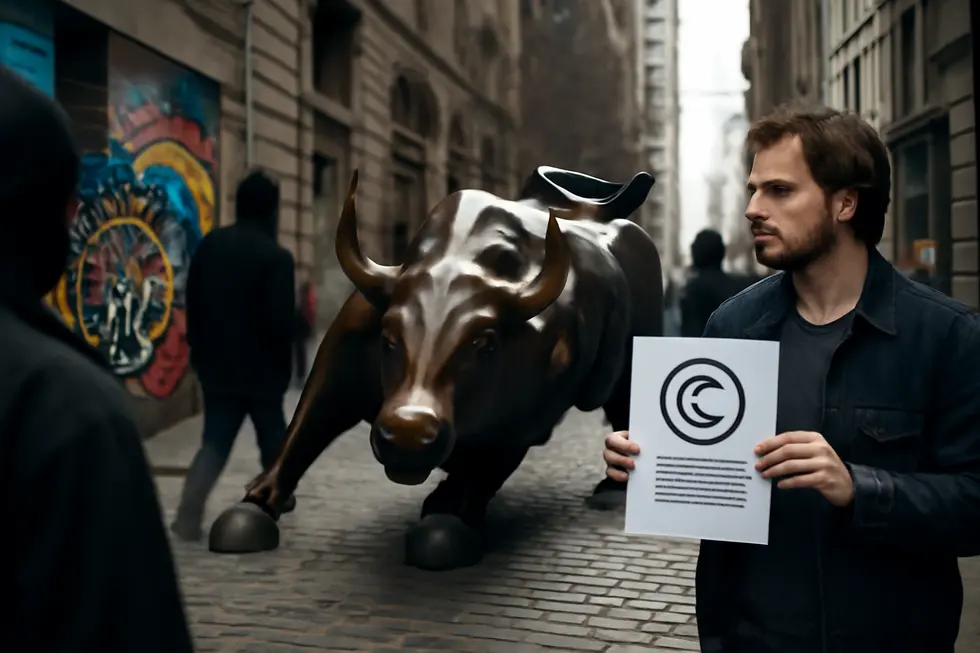
1. How Legal Protections Shape the Use and Misuse of Sculptures and Street Art in Copyright Disputes
Copyright protects sculptures as unique artistic expressions, granting creators exclusive rights over reproduction, public display, and derivative work creation. This legal framework extends beyond the physical object to its photographic representations, which are considered derivative works requiring permission from the rights holder unless protected by fair use. For instance, educational use of sculpture photographs may qualify as transformative and fair use, whereas publishing the same images as aesthetic objects without authorization typically infringes copyright.
Unauthorized use of sculptures illustrates the real-world complexities artists face. Legal actions have addressed cases where photographs of sculptures were copied or displayed in commercial settings without licenses, resulting in claims for copyright infringement and moral rights violations. Even posting copyrighted images of sculptures on social media without permission can prompt cease-and-desist letters or lawsuits, reflecting the thorough scope of protection granted to sculptural works.
Moral rights further strengthen artists’ control, especially in public art. These rights guard against mutilation or removal without the artist’s consent, balancing artistic integrity with property owners’ needs. In public mural projects, contracts often clarify these terms, including provisions for advance notice and possible waivers, fostering respect for artist contributions while managing practical limitations.
The legal landscape surrounding graffiti and street art is more nuanced. While street art created with permission enjoys clearer copyright protection, unauthorized graffiti often blurs the lines between infringement and vandalism. Despite its contested legality, unauthorized street art can still attract protection for its artistic value, although creators risk legal consequences. This ambiguity highlights ongoing challenges for visual artists and property owners alike.
Ultimately, real-life copyright disputes involving sculptures and graffiti demonstrate the critical importance of securing proper licenses, respecting moral rights, and understanding the distinctions between permitted use and infringement. These cases emphasize the need for both artists and users to navigate copyright carefully to uphold creative rights within public and digital realms.
For further insights into the protection of artistic works and copyright basics relevant to creators and users, see: copyright information example business.
2. Navigating Copyright Conflicts and Commercial Exploitation in Graffiti and Sculpture Art
Navigating Copyright Conflicts and Commercial Exploitation in Graffiti and Sculpture Art
Copyright disputes surrounding graffiti and sculptures reveal complex tensions between creative expression, legal protection, and commercial interests. Graffiti, originally viewed as an illicit street phenomenon, has increasingly been recognized as a legitimate art form. Despite this acceptance, unauthorized commercial use of graffiti remains a common infringement issue. Large corporations have faced legal challenges when exploiting graffiti images or sculptures without permission, sometimes reproducing these works on merchandise, advertisements, or other commercial products. Such usage typically violates copyright, even if the art was created anonymously or in public spaces.
Artists and their estates actively assert copyright ownership over their graffiti or sculptures, but enforcement remains difficult. Many graffiti artists lack the resources to engage in protracted legal battles, especially when disputes involve powerful commercial entities. In places like Australia, where copyright protection for street art is automatic, enforcement often depends on informal settlements or quiet resolutions outside court. This underscores the disparity between legal rights and practical ability to protect them.
Unauthorized use covers a wide spectrum: from using graffiti or sculptures as primary images in commercial products to altering or distorting artworks in ways that infringe on artists’ moral rights. Moral rights give artists control over how their work is presented, especially guarding against modifications that undermine the original intent or reputation. Even anonymous artists retain copyright, yet proving ownership and authorship becomes a formidable legal hurdle.
The commercial exploitation of graffiti also raises cultural debates. While some artists reject commercialization, seeing it as antithetical to graffiti’s rebellious roots, others embrace these opportunities to monetize their art legally. Similarly, sculptors face parallel challenges when their works are reproduced or used commercially without consent. Legal principles protecting sculptures closely mirror those for graffiti and other visual arts, affirming creators’ rights over unauthorized exploitation.
These real-life disputes illuminate the crucial need for clear licensing and respect for artists’ rights amid evolving cultural and commercial landscapes. They reveal how copyright law must balance artistic integrity with practical enforcement. For deeper legal context and analysis, resources such as the Columbia Journal of Law & the Arts offer valuable insights.
For more on copyright frameworks relevant to artists and businesses, see copyright information example business.
3. Navigating Copyright Challenges in Visual Arts: When Sculptures and Graffiti Meet Unauthorized Use
Navigating Copyright Challenges in Visual Arts: When Sculptures and Graffiti Meet Unauthorized Use
Visual arts pose distinct challenges in copyright law, especially when it comes to the unauthorized use and transformation of sculptures and graffiti. Copyright protects original artistic expressions, but discerning between infringement and legitimate creative transformation is often complex. Sculptures, as tangible and highly visual expressions, are vulnerable to direct copying or replication without permission. Infringement occurs when a new sculpture mirrors the original too closely, offering little to no new expression or meaning. However, if the artwork introduces significant transformation—such as altering the form, context, or concept—it can potentially qualify as a new, protected work under the fair use doctrine, though such cases are typically debated in courtrooms.
Graffiti challenges copyright frameworks in multiple ways because it is often created illegally on private or public property. Despite its contested legal status, graffiti art holds copyright protection as soon as it is fixed in a tangible medium, granting artists rights over unauthorized reproductions. The tension arises when graffiti works are commercialized or reproduced by companies without consent, raising infringement claims. However, enforcing these rights proves difficult due to the illicit nature of many original graffiti pieces and overlapping property law concerns. Furthermore, the distinction between unauthorized graffiti and permitted street art complicates how courts and society perceive ownership and protection.
Real-world incidents illustrate these nuanced issues: artists have sued when companies replicate graffiti without permission, while courts have ruled against claims when new works only capture ideas or general themes without copying specific expressions. Similarly, photographic reproductions of visual art, such as paintings closely imitating copyrighted photos, risk infringement if minimal creative changes are made and commercial use occurs. Conversely, simply capturing similar subjects or concepts generally does not constitute infringement.
Ultimately, these examples show that unauthorized use cases in sculptures and graffiti require careful consideration of transformation, originality, and context. The evolving cultural and legal landscape demands a balance between protecting artists’ creative rights and acknowledging public access or reinterpretation. For further insight on how copyright protection intersects with diverse artistic expressions, exploring copyright definitions for business owners offers valuable foundational knowledge.
External reference: Copyright infringement in painting from photographs
Chapter 4: Copyright Examples in Real Life: Film Industry Copyright Disputes and Streaming Service Lawsuits
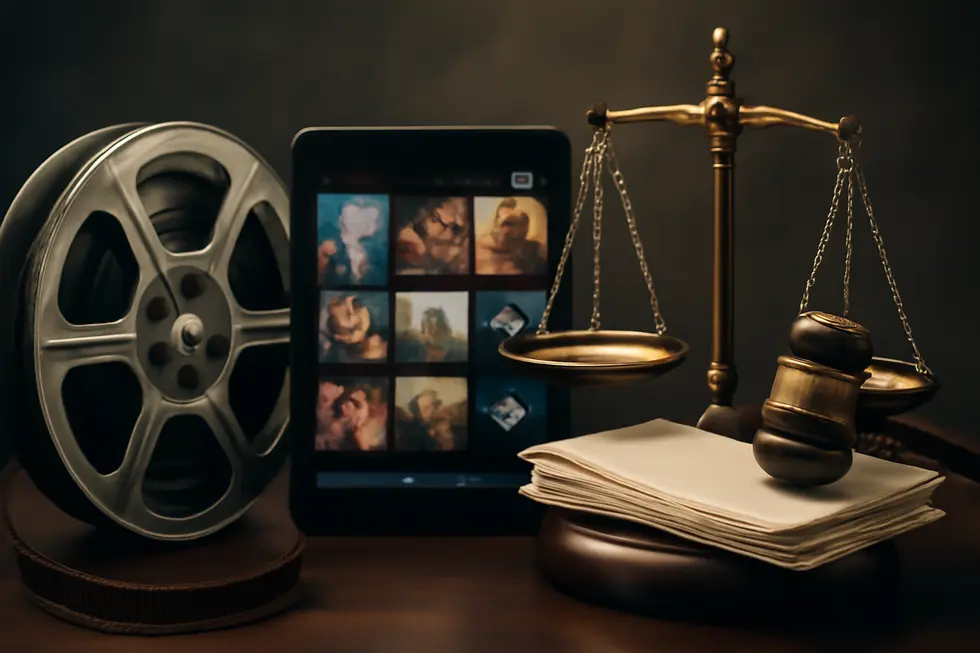
1. Navigating Character and Trademark Rights Conflicts in Film and Streaming Copyright Disputes
In the evolving landscape of copyright law, conflicts over character and trademark rights have become central to major disputes within the film industry and streaming services. These conflicts often arise when studios, game developers, or digital platforms face accusations of unauthorized use or imitation of iconic characters, which are not only protected by copyright but may also carry trademark protections aimed at preventing consumer confusion.
A prominent example occurred in the mid-2000s when two entertainment giants clashed over film rights tied to a beloved group of superheroes. One studio asserted exclusive licensing for these characters, attempting to block the rival studio’s efforts to feature similar heroes in their productions. This legal tussle highlighted how studios assert exclusive character rights to safeguard their franchise identities, underscoring the fine line between collaboration and infringement.
Outside traditional films, the gaming industry also illustrates these tensions. A lawsuit filed by a well-known game publisher targeted a competing company over a character bearing striking resemblance to one of their own distinctive creations. The plaintiff argued that such lookalike characters could mislead consumers and dilute their trademark’s value. This led to the opposing company removing contested elements from their promotional assets, a move reflecting the seriousness with which companies defend character trademarks not only in films but across multimedia platforms.
More recently, the rise of artificial intelligence has introduced unprecedented challenges. A major film studio initiated legal action against an AI-based content generation platform that allowed users to produce images mimicking famous characters without permission. This case highlights the tension between emerging technologies and traditional intellectual property rights, as studios seek injunctions to curb unauthorized creations that could undermine their exclusive control over iconic characters.
Together, these disputes demonstrate the intricate interplay between copyright and trademark protections in safeguarding unique character expressions and brand identities. They also reveal the ongoing struggle to adapt legal frameworks in response to technological innovation and new content distribution channels. Understanding these conflicts is essential for recognizing how copyright enforcement continues to shape creative industries today.
For a deeper understanding of these evolving character and trademark issues, see the detailed analysis of such conflicts in entertainment law at Bytescare on movie copyright infringement.
To explore more about protecting intellectual property through trademarks in business contexts, the resource on trademark protection for business names and logos offers valuable insights.
2. The Rising Tide of Streaming Lawsuits and AI Challenges in Film Copyright Enforcement
The film industry’s copyright landscape is increasingly shaped by complex legal battles involving streaming services and emerging technologies like artificial intelligence. At the forefront are lawsuits highlighting how traditional copyright protections clash with modern content creation and distribution methods. Recent legal disputes illustrate how studios vigorously protect their exclusive rights, particularly against unauthorized use and AI-generated content.
A prime example is the lawsuit filed by a major entertainment conglomerate against an AI company accused of infringing on copyrighted characters. The studio asserted that its iconic figures, central to lucrative film franchises, are safeguarded under strict reproduction and derivative work rights. This case epitomizes rising tension as AI technologies generate new material inspired by copyrighted sources without authorization, threatening the control studios hold over their creations and raising concerns about job impacts in creative sectors.
Adding to this evolving narrative was a landmark settlement between an AI developer and authors whose copyrighted books were used to train language models. This unprecedented $1.5 billion resolution challenges the previously assumed notion that training AI on copyrighted content automatically qualifies as fair use. It sets a critical precedent that compensating original creators may become essential, signaling a shift in how intellectual property intersects with expanding AI abilities.
Simultaneously, streaming platforms face ongoing copyright enforcement challenges under laws like the Digital Millennium Copyright Act (DMCA). These services must delicately balance removing infringing user content with safeguarding lawful expression and user rights. The growing complexity drives platforms to adopt sophisticated compliance measures to maintain legal protections and avoid liability.
Moreover, content creators on streaming sites increasingly rely on specialized insurance policies to mitigate risks associated with copyright claims, including potential legal defenses, settlements, or related liabilities. This trend underscores the practical challenges faced by creators navigating copyright intricacies amid streaming’s dominance.
Together, these issues reveal a dynamic and sometimes contentious intersection of copyright law, innovative technology, and the economics of film content creation and distribution. For those interested in deeper analysis of such disputes, detailed reporting on the landmark AI-related lawsuit is available through established news sources. To understand more about how legal frameworks apply to creative works, consider exploring copyright law fundamentals.
3. Navigating Innovation and Intellectual Property: Film Industry Challenges with Streaming, AI, and Trademark Protections
The evolution of technology has reshaped the film industry’s creative landscape, giving rise to complex copyright disputes and ushering in a new era of legal scrutiny. Digital streaming platforms, for example, have sparked intense litigation over how copyrighted films are accessed and modified. One landmark case involved a streaming service that offered users the ability to filter out objectionable content from movies. While innovative in concept, this practice was challenged by film studios for unauthorized alteration and distribution of their copyrighted works. The court’s ruling in favor of copyright holders reaffirmed the legal boundaries protecting original films, emphasizing that technological novelty must align with established intellectual property rights.
The realm of unauthorized remakes and song copying further illustrates the rigid protections filmmakers rely upon to guard their original expressions. Notable legal battles in India have underscored the seriousness with which unauthorized adaptations are contested. Successful lawsuits against unauthorized remakes and music copying reflect the industry’s commitment to preserving authentic creative contributions and discouraging appropriation without consent.
Meanwhile, the rapid advance of artificial intelligence introduces fresh copyright questions. Courts are currently wrestling with whether AI trained on copyrighted material infringes or qualifies as fair use, especially when such technology generates new content resembling original works. These proceedings acknowledge AI’s transformative potential but recognize the risk of market harm to original creators. Consequently, film companies are now instituting strict legal review protocols when deploying AI for tasks like dialogue or imagery generation to avoid infringement.
Beyond copyrights, film studios actively protect their intellectual assets through trademarks, aggressively policing unauthorized use of iconic logos and branding. Lawsuits against misuse of trademarked imagery highlight the broader scope of intellectual property enforcement beyond the films themselves.
These real-life disputes illustrate the delicate balance between embracing technological progress and upholding creators’ rights in the film industry. As innovation accelerates, legal frameworks continually evolve to ensure that new tools and platforms respect the foundational principles of copyright law.
For deeper insight into notable cases in the film world, see this exploration of famous movie copyright infringement cases. For a foundational understanding relevant to businesses and creators, exploring copyright basics for businesses provides helpful context.
Final thoughts
The real-world examples of copyright disputes across music sharing platforms, social media services, visual arts, and the film industry bring invaluable lessons for business owners. They underscore the importance of securing proper licensing, respecting intellectual property rights, and understanding the boundaries of copyright protection. As technologies evolve and creative content becomes increasingly accessible and shared, navigating copyright law carefully is essential to avoid legal pitfalls and safeguard business value. Ultimately, proactive management of copyrights not only minimizes risk but also strengthens a business’s capacity to innovate and compete in a legally compliant manner.
Your IP is the foundation of your success – let’s protect it together before it’s too late. We can’t wait to help you turn your ideas into legally secured assets.
About us
undefined
